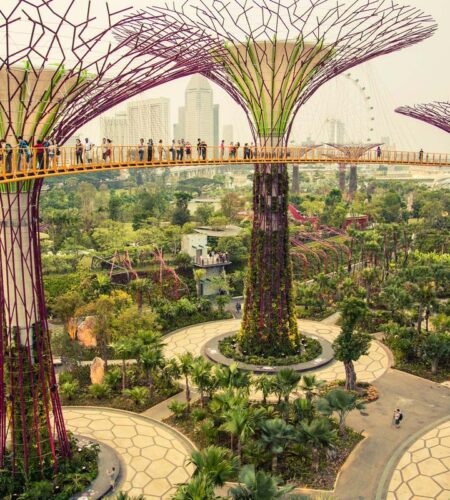As urbanization continues to spread, a growing movement is pushing to bring nature back to our cities. Rewilding, the practice of restoring natural habitats and ecosystems, is gaining traction as a way to combat the environmental and social impacts of urbanization. For millennials, who often prioritize sustainability and community, rewilding offers a vision of cities that are greener, healthier, and more connected to nature.
The Concept of Rewilding
Rewilding involves reintroducing native plants and animals to areas where they have been displaced, allowing natural processes to take over and restore ecological balance. In an urban context, rewilding can take many forms, from planting native vegetation and creating green corridors to reintroducing pollinators and small wildlife.
The goal is to create urban environments that support biodiversity, improve air and water quality, and provide spaces for recreation and relaxation. Rewilding projects can range from small community gardens to large-scale urban parks, each contributing to the overall health and resilience of the city.
The Benefits of Rewilding Cities
Rewilding cities offers numerous benefits, both environmental and social. Restoring natural habitats helps to increase biodiversity, providing homes for a variety of plant and animal species. This, in turn, supports ecosystem services such as pollination, pest control, and soil health, which are essential for sustainable urban living.
Green spaces also play a crucial role in improving air and water quality. Plants absorb pollutants and release oxygen, while natural water features can help to filter and purify water. Additionally, green spaces can mitigate the urban heat island effect, where cities become significantly warmer than surrounding areas due to concrete and asphalt absorbing heat.
Socially, rewilding can enhance the quality of life for urban residents. Access to green spaces has been shown to improve mental health, reduce stress, and encourage physical activity. Rewilding projects often involve community participation, fostering a sense of ownership and connection among residents.
Examples of Urban Rewilding
Several cities around the world are embracing rewilding as a way to enhance urban environments. In London, the “Rewild My Street” initiative encourages residents to make their streets more wildlife-friendly by planting native species and creating habitats for birds, bees, and butterflies. New York City’s High Line, a park built on a disused elevated railway, is a prominent example of how urban spaces can be transformed into green oases.
In Singapore, the “City in a Garden” vision has led to the creation of extensive green networks throughout the city, including vertical gardens, green roofs, and urban parks. These projects not only enhance the city’s aesthetics but also support biodiversity and improve the quality of life for residents.
The Role of Technology
Technology is playing a significant role in the rewilding movement. Drones and GIS mapping are used to monitor and manage rewilding projects, ensuring that they are effective and sustainable. Apps and online platforms connect urban residents with rewilding initiatives, providing information and resources to help them get involved.
Innovations in green architecture and urban planning are also contributing to the rewilding movement. Green roofs, living walls, and biophilic design principles integrate nature into the built environment, creating spaces that are both functional and aesthetically pleasing.
Rewilding cities represents a transformative approach to urban living, blending the built environment with the natural world. For millennials, who are often at the forefront of sustainability initiatives, rewilding offers a path to healthier, more vibrant cities. As the movement continues to grow, it has the potential to reshape urban landscapes, making them more resilient, sustainable, and connected to nature.


